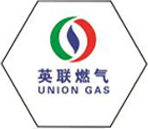
Oct . 30, 2024 21:37
Back to list
pressure reducing regulators
Understanding Pressure Reducing Regulators A Key Component in Fluid Control Systems
Pressure reducing regulators (PRRs) are essential devices used in various industrial, commercial, and residential applications to manage the pressure of gases and liquids
. Their primary function is to maintain a constant output pressure despite fluctuations in input pressure, ensuring that systems operate safely and efficiently.The core mechanism of a pressure reducing regulator involves a diaphragm or piston that responds to incoming pressure changes. When the inlet pressure exceeds the setpoint, the diaphragm moves to partially close the outlet, thereby reducing the flow and allowing the exit pressure to stabilize. Conversely, when the inlet pressure drops, the diaphragm opens, allowing more fluid to flow and maintaining the desired output pressure.
One of the most significant advantages of using a pressure reducing regulator is enhanced safety. Many applications require precise pressure control to prevent equipment failure or accidents. For instance, in a gas distribution system, excessive pressure can lead to leaks or bursts, posing a risk to both personnel and property. By ensuring a consistent and safe outlet pressure, PRRs help to mitigate these risks.
pressure reducing regulators

Moreover, pressure reducing regulators contribute to system efficiency. In processes such as chemical manufacturing, where various reactions depend on specific pressure levels, maintaining the correct pressure can improve product quality and yield. Additionally, in heating systems, reducing the pressure of steam or hot water can enhance energy efficiency, resulting in lower operational costs.
PRRs come in various designs and materials, tailored to meet the specific requirements of different applications. For example, in high-temperature or corrosive environments, regulators made from stainless steel or specialized alloys are often used to ensure durability and longevity. Furthermore, the adjustment mechanisms of regulators can vary, ranging from simple hand-wheel adjustments to more sophisticated electronic controls that allow for remote monitoring and management.
When selecting a pressure reducing regulator, several factors must be considered, including the required flow rate, inlet and outlet pressures, and the nature of the fluid being managed. It's also essential to regularly inspect and maintain these devices to ensure optimal performance. Over time, wear and tear can affect their accuracy and reliability, potentially compromising the safety and efficiency of the entire system.
In conclusion, pressure reducing regulators play a vital role in the safe and efficient operation of various systems that involve gases and liquids. By maintaining a consistent output pressure, they safeguard equipment, enhance energy efficiency, and ensure that processes run smoothly. Whether in industrial plants, medical gas systems, or residential heating units, PRRs are indispensable tools in fluid control technology. Understanding their function and importance is crucial for anyone involved in system design, maintenance, or operation.
Next:
Latest news
-
Safety Valve Spring-Loaded Design Overpressure ProtectionNewsJul.25,2025
-
Precision Voltage Regulator AC5 Accuracy Grade PerformanceNewsJul.25,2025
-
Natural Gas Pressure Regulating Skid Industrial Pipeline ApplicationsNewsJul.25,2025
-
Natural Gas Filter Stainless Steel Mesh Element DesignNewsJul.25,2025
-
Gas Pressure Regulator Valve Direct-Acting Spring-Loaded DesignNewsJul.25,2025
-
Decompression Equipment Multi-Stage Heat Exchange System DesignNewsJul.25,2025

